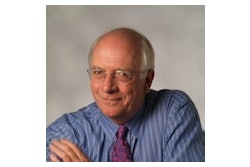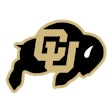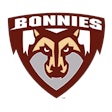Copyright 2018 The Buffalo News
All Rights Reserved
The Buffalo News (New York)
In 10 years as MAC commissioner, Jon Steinbrecher has helped the conference extend its long-term football television deal with ESPN and increase its number of bowl ties.
Under his leadership, the MAC has diversified itself as a basketball conference. Two women's teams reached the 2018 NCAA Tournament Sweet 16. The MAC will host the 2024 Women's Final Four in Cleveland.
Still, Steinbrecher jokingly scoffs at the MAC being labeled as "a mid-major conference."
But he isn't afraid to do something outside the traditional leadership box. In an effort to improve the conference's visibility, he dressed like a pirate who combed the shores of Lake Erie and urged the 12 MAC football programs to "Fly The flag." The video, released in August, turned into a viral MAC moment — who would anticipate a commissioner of a major Division I athletic conference to espouse such creativity?
In a 20-minute conversation with The Buffalo News on Sept. 22, prior to the UB football team's 42-13 loss to Army at UB Stadium, Steinbrecher discussed the UB football team's success, the growing popularity of "MACtion," the conference's mid-week games on ESPN; and how the conference rewards its basketball teams.
This interview has been edited for clarity and condensed for space.
BN: When you unveiled the 2018 football season, you did it dressed as a pirate to promote MAC football. Not a lot of people expected to see an athletic conference commissioner do something so daring, and the video went viral. Why did you do that?
Steinbrecher: The whole thing is interesting. I've been doing that for four or five years, privately. Not the dressing of a pirate thing (laughs), but "Fly the flag" is something I've been doing with our teams, with our coaches, with our ADs. After non-conference wins or bowl games, I'd email them a picture of the MAC Jolly Roger flag and say, "Hey, congrats, and fly the flag." And we'd share it with everybody.
Again, in the nonconference games, particularly, we all have to root for each other. We're all trying to collectively raise this organization. I said, "Heck with it, I'm going to talk about it publicly, and we'll see what kind of reaction we'll get." I've been pleased. People get it. It's fun. It's a fun part of sports. It's a great way for us to collectively rally. Even during the conference season, you win a game? Fly the flag for yourself. Sometimes, we have to take different steps to gain some notoriety and exposure.
BN: Buffalo is a football team that continues to make history within the program, within the MAC. What does this do to help boost the profile of the MAC, to "fly the flag," if you will?
Steinbrecher: Lance (Leipold) has gone about building the program in the right way. It's a step-by-step process, and he'd tell you that. It's taken a few years to turn that ship around. But he's building a program to last, I believe. They're bigger. They're faster. They're stronger. The school, they're doing things to provide some of the support services that, they're not luxuries, they're necessities, whether it's the office space, the meeting space, the locker-room space, the fueling station, the indoor facility, which is absolutely critical. All these types of things, you need to have. All these parts are coming together, and it certainly appears you've got the right coach and the right coaching staff, you've got a great group of kids and you're starting to see some of the results on the field.
BN: UB went 6-6 in 2017 and didn't get a bowl bid. That surprised a lot of people. Is that a reflection of the conference, or is that a misnomer regarding the conference?
Steinbrecher: 'X' years ago, we had been contracted for five primary bowls last year. However, the year before that, one of the games, the Poinsettia Bowl, decided to close shop. So we lost a game. We were down to four bowls last year. That did us. We knew going in that it would be challenging, and there would very possibly not be enough games. And then we didn't get some help from some of our bowl friends that we might have had hope for. Sometimes that happens.
But our teams knew going in, sometimes 6-6 might not be good enough to get you a bowl game. It doesn't mean you're not disappointed. I'm bitterly disappointed for our teams. I know the kids were. This year we're back to five primary bowl agreements and I'd also share that we're in the process of negotiating bowl agreements for the next six-year period, which starts in two years (2020). We anticipate we'll be signing six primary bowl agreements. Hopefully, it will take care of that issue.
This year we're in Montgomery, the Raycom Camellia Bowl. We're in Mobile, which is the Dollar General Bowl. We're in the Bahamas Bowl, Boise, the famous Idaho Potato Bowl, and we're in Frisco, Texas. No Boca Bowl this year.
BN: Mid-week games on ESPN — "MACtion" — have become a trademark. As far as getting those mid-week games as opposed to the traditional Saturday games, have you seen that impact programs or teams, where a program might say, "Hey, we've got to juggle our schedule," or "I don't know about a Wednesday night game in November." Or are teams receptive to this change in the schedule?
Steinbrecher: You spoke of it as a calling card, and I would say it's provided the platform to take us from being a regional conference to being a national conference, and it's brought unprecedented exposure to our teams. When you have a couple nights of the week in that last month of the season, when you're playing out that race, no one else is playing on those nights. You get a chance to tell a story. Our coaches, to an institution, would tell you it's assisted them with recruiting. It doesn't mean it's not a challenge for the fans. Sure it is. But we're asking one or two games a year to work with us. I'm completing the stats right now, and virtually every team in FBS is playing one or more non-Saturday games. We've been doing it for 20 years. It's helped build the "MACtion" brand.
BN: There are a lot of night games in November, but there are nights like election night, for instance (Buffalo hosts Kent State at 7:30 p.m. Nov. 6) or mid-week when it was 30 degrees and nobody in the stands. What's the challenge, to tell the fans, "come out here tonight"?
Steinbrecher: What I'd also tell you is that in November, it can also be cold and wet on Saturdays as it is mid-week. You've got to decide it's important and make the commitment, that we're going to be up late and we're going to come out and support the local team.
BN: There was a Wall Street Journal report earlier this year that examined inflated attendance figures that we're seeing across the board in college football. The MAC stood out in that report. When you saw that, what was your first thought, and what does the league and the schools need to do, collectively, to close that gap and say, "let's get some butts in the stands"?
Steinbrecher: I think what we find is at our schools that are doing well, their attendance is very strong. When the success of the team falls off, the attendance falls off. It follows very closely to that. To me, there's marketing and promotional stuff we can do, but it's just so critical that your team be successful. You've already seen it this season, what's going on with attendance at Buffalo (UB has reported an attendance of 79,490 for its first four home games, an average of 19,873 a game).
Let's go back to Western Michigan a couple years ago. They went to the Cotton Bowl and it didn't matter what night of the week they played on, that place was packed. (Western Michigan reported an attendance of 143,025 for its six home games in 2016, an average of 23,838 per game). We see what everyone else sees, and student attendance is really challenging. It's continuing to find ways to hook them into it. It's more than a game. What schools are all selling is the experience. You've got the concerts and Buffalo and all these other things going on, so schools are looking at different ways and different things to build that into what's going on around football games.
BN: What do you think schools have done to get the word out? What are they doing to sell that experience to get people in the stands, beyond winning?
Steinbrecher: All of our schools sell it in different ways. Go to Toledo and go through their tailgate areas and what they do. Ohio University, which is a much more rural setting, the different student areas they have. Again, you go across any one of our institutions and they are doing their own unique and neat things.
BN: College football enters the second year of the early signing period, with securing recruits in December and February, has it affected the MAC at all?
Steinbrecher: My sense is, at this point, is that our folks like it. I don't know that we necessarily like is where the date is. If push came to shove, if we're going to have an early signing period, let's have it somewhere in August or the end of July or the first of September. But I think we do like it, and my sense is also the recruits like it and parents like it. For the kids who know where they're going and have made that commitment, it gets it off the board and they can move on and focus on other things.
I think that's been positive, but we're moving into the second year of it, and let's give it two or three years, let's let it breathe, and then let's step back away from it and talk to the different groups involved. Talk to the prospects and recruits, talk to the coaches, look at some of the data. What is it doing, in terms of things like, what are the academics? Are kids coming in and performing the way we want them to? Are they sticking around or are they transferring? All these types of things that we'll need to take a look at and make some determinations of whether or not it was, in fact, the right thing to do.
BN: Basketball had a lot of success in the NCAA tournaments, with Buffalo and Central Michigan reaching the Sweet 16 of the NCAA women's tournament and Buffalo reaching the second round of the men's tournament last year. It helped elevate the conference's profile as a basketball conference. But how will the league distribute money it receives from the postseason payouts?
Steinbrecher: We have a pretty standardized distribution, and it's basically divided pretty evenly (among teams). We also have an incentive plan and to qualify for it, you have to hit some scheduling marks, and then, based on meeting certain criteria, you get additional dollars, whether it's where you fall in the final RPI, or certain kinds of wins. There's seven things you can qualify to get units for, and if you hit those, you get additional dollars.
I don't remember what the distribution was. The interesting thing is that Buffalo won a game in the tournament and it didn't change the distribution last year, but it will mean an extra unit for the next six years of distribution. We know we have seven units this year (per the MAC, the league regular-season champion, MAC tournament champion, NCAA tournament appearance and each NCAA tournament win, NIT appearance and each NIT win, CBI/CIT berth, quadrant wins that are Quadrant 1 non-conference wins and Quadrant 2 non-conference wins and final RPI adjusted ranking, between 1-50 and 51-100).
They're roughly $250,000 per unit. You can do the math with that.
The standard distribution is divided evenly. There's an incentive pool that teams qualify for, meets scheduling criteria of 15 home games over a rolling two-year period, or average 15 home games over a rolling two-year period. Then, if you do that, you qualify for dollars out of this pool. I don't have the list in front of me, but the criteria includes: is your final RPI 1-50, or 51-100? You can pick up a couple units for that. If you have some wins over a certain level of opponents. If you win the conference tournament, if you win the regular season, if you win postseason games, you pick up additional units. Then we add up all the units and divide the pot by whatever units there are. From the NCAA, we're given dollars, and the basketball revenue distribution is based on cumulative period of units over six years.
It's $250,000 times seven units, and that's almost 2 million dollars.
Note: Neither Steinbrecher nor a MAC spokesman would disclose the standard distribution.
Read More of Today's AB Headlines
Subscribe to Our Daily E-Newsletter
Terms and Conditions Privacy Policy





























